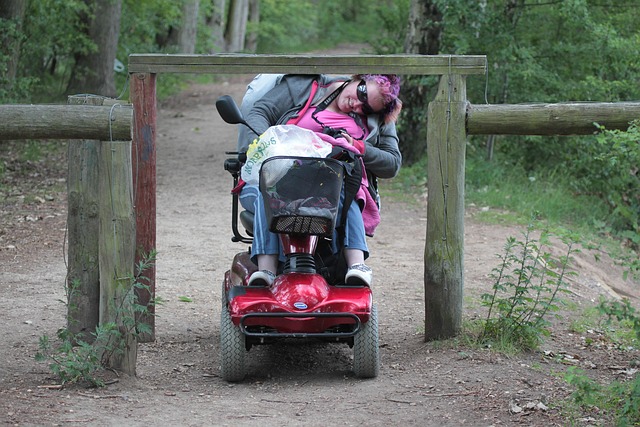Eugene, Oregon, faces a critical need for accessible transportation to support its diverse community, particularly individuals with disabilities and seniors. The current lack of specialized transport hinders daily lives, leading to social isolation and limited access to essential services. The city is taking steps to address this gap by expanding paratransit services, introducing wheelchair-accessible public transit, promoting inclusive initiatives like carpooling, and integrating cutting-edge technologies. Community organizations play a vital role in shaping these efforts, ensuring equal access to mobility for all residents in Eugene Oregon.
Eugene, Oregon, boasts a vibrant community, but navigating the city’s transportation landscape presents unique challenges for individuals with disabilities and seniors. This article delves into the pressing need for accessible transportation in Eugene Oregon, exploring the disabled transport and senior transport barriers they encounter daily. We analyze current wheelchair accessible options like public transit and paratransit services, highlight innovative solutions, and discuss community organizations’ crucial role. Additionally, we glimpse into future prospects for an inclusive transport system in Eugene Oregon.
- Understanding the Need for Accessible Transportation in Eugene Oregon
- Challenges Faced by Individuals with Disabilities and Seniors in Getting Around
- Current Wheelchair Accessible Options in Eugene: Public Transit and Paratransit Services
- Innovative Solutions to Enhance Mobility for the Disabled Community
- The Role of Community Organizations and Initiatives in Promoting Inclusive Transport
- Future Prospects: What's Next for Accessible Transportation in Eugene Oregon?
Understanding the Need for Accessible Transportation in Eugene Oregon

In Eugene, Oregon, the need for accessible transportation goes beyond mere convenience; it’s a matter of ensuring equal access and inclusivity for all residents, including those with disabilities, seniors, and individuals using wheelchairs. The city’s diverse population has unique mobility needs that demand specialized transport solutions. With an increasing elderly demographic and a growing awareness of accessibility issues, Eugene Oregon faces challenges in providing efficient and comprehensive disabled transport services.
The absence of robust paratransit systems and wheelchair accessible options can significantly hinder the daily lives of individuals with disabilities and seniors. Many current transport options may not cater to those using mobility aids, leading to social isolation and limited access to essential services and opportunities. Therefore, promoting inclusive transport is crucial in fostering a vibrant and accessible community where everyone can participate fully.
Challenges Faced by Individuals with Disabilities and Seniors in Getting Around

In Eugene, Oregon, individuals with disabilities and seniors often face significant challenges when it comes to accessible transportation. The city’s diverse landscape, including hills, narrow streets, and a lack of comprehensive wheelchair-accessible public transit options, can make getting around difficult and sometimes impossible for those with limited mobility. Many disabled and senior residents are left reliant on family members or private vehicles, which can be inconvenient, costly, and limit their independence.
Additionally, the current transportation system in Eugene Oregon may not cater to the unique needs of all individuals with disabilities, including visual and hearing impairments, cognitive disabilities, and those using mobility aids like wheelchairs or walkers. The lack of accessible paratransit services, such as door-to-door shuttles designed for people with disabilities, further complicates their daily commutes, access to medical appointments, and participation in community activities. This creates an inclusive transport gap that requires immediate attention and innovative solutions to ensure everyone in Eugene Oregon can navigate the city safely, efficiently, and independently.
Current Wheelchair Accessible Options in Eugene: Public Transit and Paratransit Services

Eugene, Oregon, has made strides in enhancing its accessibility for individuals with disabilities, particularly those using wheelchairs. The city offers a range of public transit options designed to cater to the needs of the disabled population. The local bus system is equipped with low-floor buses, making boarding and alighting easier for wheelchair users. These buses are also fitted with ramp access, ensuring smooth travel experiences for all passengers.
In addition to conventional public transport, Eugene provides paratransit services specifically tailored for individuals who cannot use regular buses due to disabilities. These services offer door-to-door transportation, making it more convenient for seniors and people with limited mobility to get around. The inclusive transport initiatives in Eugene Oregon demonstrate a commitment to creating a accessible environment, ensuring that no one is left behind when it comes to navigating the city.
Innovative Solutions to Enhance Mobility for the Disabled Community

Eugene, Oregon, is committed to improving its accessibility for all, including individuals with disabilities. To address the unique challenges faced by the disabled community in terms of transportation, several innovative solutions have emerged. One notable approach is the expansion of paratransit services specifically designed for those who use wheelchairs or have other mobility impairments. These services offer door-to-door transport, ensuring that individuals can access medical appointments, employment opportunities, and social events independently.
Additionally, the city promotes inclusive transport through various initiatives. This includes encouraging carpooling and ride-sharing options to reduce congestion and provide cost-effective solutions for everyone. Accessible public transit, such as buses with low-floor entrances and dedicated spaces for wheelchairs, is also being enhanced. These efforts aim to foster a more connected community where people with disabilities can navigate the city with ease, promoting independence and equal opportunities for participation in all aspects of urban life.
The Role of Community Organizations and Initiatives in Promoting Inclusive Transport

Community organizations and initiatives play a pivotal role in shaping the landscape of accessible transportation in Eugene, Oregon. These grassroots efforts are dedicated to promoting inclusivity and ensuring that individuals with disabilities, seniors, and those requiring wheelchair accessibility have equal access to mobility. By organizing awareness campaigns, advocating for policy changes, and providing direct services, local groups contribute significantly to making Eugene a more transport-inclusive city.
In Eugene, several community-led initiatives offer paratransit services tailored to the unique needs of the disabled and senior populations. These services include door-to-door transportation, accessible van pools, and specialized programs that bridge the gap between public transit and individuals who may otherwise face challenges in navigating the city. Through their efforts, these organizations not only enhance accessibility but also foster a sense of community and independence for those who rely on them, ultimately enriching the overall transport experience in Eugene Oregon.
Future Prospects: What's Next for Accessible Transportation in Eugene Oregon?

The future of accessible transportation in Eugene, Oregon, looks promising as the city continues to strive for a more inclusive and mobile community. With a growing awareness of the needs of individuals with disabilities, seniors, and those using wheelchairs, there is a push to expand and enhance existing paratransit services. The goal is to create a seamless network that ensures everyone can navigate the city with ease.
One potential direction is the integration of innovative technologies, such as autonomous vehicles and advanced navigation systems, to improve accessibility and safety. These solutions could reduce wait times for paratransit services and provide more independence for those who rely on them. Additionally, there are plans to increase the availability of wheelchair-accessible buses and vehicles, making public transport more inclusive. By addressing these challenges head-on, Eugene Oregon is poised to become a leader in inclusive transport, setting an example for other cities across the nation.
